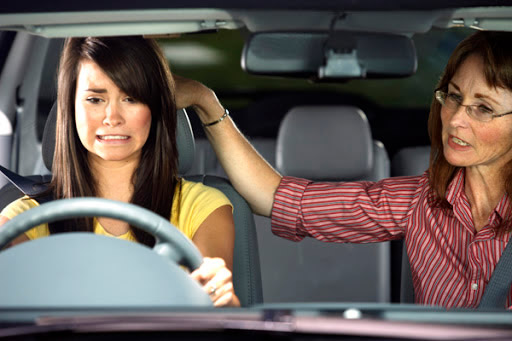Teach Your Kids To Drive
From learner drivers to safe P platers, these are our top tips for teaching kids to drive.
Kids grow up so fast. One minute you’re showing them how to tie shoelaces, and the next you’re teaching them to parallel park. While the thought of your child driving solo might be sickening it’s a key milestone for any young person. A shiny new P-plate will give them freedom and independence, but it also puts them at huge risk. Over the past 10 years, more than 300 drivers aged 18 to 25 have died on the state’s roads.
RACV driving instructor Jeremy Azzopardi shares his tips for creating safe, secure P-platers.
How can we make our young people safer on the roads?
“We need to train them properly,” says Jeremy, a passionate advocate for raising safe young drivers. “Start by finding a good instructor and make sure you help your child gain plenty of practice in all conditions.”
Do I really need a professional instructor to teach my child to drive?
“No, parents can teach, as long as they do it in the right way,” explains Jeremy. “Some parents are good teachers, and their kids just need a few lessons to put the finishing touches on their skills before their final test. The majority of kids who do really well have parents who join us in the car for a few lessons and pick up some good teaching techniques. It helps them learn what to do, and also reduces stress for everyone.”
What makes a good driving instructor?
“It’s important to have someone who’s calm and relaxed, not someone who gets angry if the learner does something wrong. Mistakes will happen – that’s all part of learning. The last thing you want is someone stressed.”
“The most important thing to remember when teaching young people to drive is to ask questions, not tell them what to do. A good instructor will form instructions by using questions. For example, ‘Is it safe to move away from the kerb?’, ‘What’s the speed limit on this road?’ or ‘What’s coming up in the mirror?’ Most parents tell kids what to do, which leads to problems when making decisions for themselves. Then they get to a roundabout with five exits instead of four, they panic and make the wrong move. Learning to drive is more than just passing the test, it’s about being able to make good decisions.”
What else do parents need to be aware of?
“Many people pass on some really bad driving habits without even knowing that they’re doing it. I see young people who’ve copied Mum or Dad and are driving with one hand, or they’re leaning on the centre console or the car door. Some even drive – and teach their kids to drive – with two feet, one on the accelerator and one on the brake. It’s just so dangerous.”
I ask kids to imagine they’re driving their best friend in the car and how they’d feel if they hurt them.
How can I help my child find a good instructor?
“Make sure any instructor you choose has a Working with Children Check and a valid Police Check. They must also have their Driving Instructor Authority displayed in the car for them to conduct the lesson. If they’re missing any of these things, I wouldn’t even get in the car.”
How many lessons will my child need?
“The average is usually between five and 10 lessons but it really varies, some people need many more than that. Learners need as many lessons as it takes to become a safe and confident driver, not just to pass the test.”
“Learners need to complete 120 hours of supervised driving before their test. That’s a lot of driving. But sometimes, families make the time up on the same route every day. Practising in all conditions and on country roads and freeways is crucial, even if you think you’ll just be driving to the same place every day. And as we know, Melbourne weather is crazy! You really need to be prepared for anything.”
Any other tips to improve driving safety?
“Every day I lose count of the people I see on their phone or speeding. I ask kids to imagine they’re driving their best friend in the car and how they’d feel if they hurt them. Get them to think about worst-case scenarios. It’s important to understand that if you make a bad decision you could end someone’s life.”
SOURCE: RACV – Author: LUCY CLEEVE June 2019




